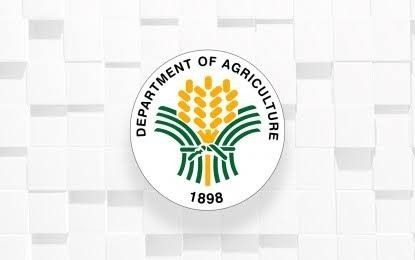[4.11] DA는 쌀 가격이 상승함에 따라 농부들이 생산 비용을 낮추도록 도와줍니다.
컨텐츠 정보
- 18,915 조회
본문
마닐라 – 화요일 농무부(DA)는 농부들이 쌀 시장 가격 상승의 주요 요인으로 간주되는 생산 비용을 낮추는 데 도움이 되는 개입을 보장했습니다.
텔레라디오 인터뷰에서 DA 차관보 "Kristine Evangelista"는 쌀 가격이 킬로그램당 최대 PHP5로 인상됨에 따라 부서가 쌀 농민 그룹과 긴밀히 협력하고 있다고 말했습니다.
“부서는 농부들이 생산 비용을 낮추는 데 도움이 되는 방법을 찾고 있습니다. [여기에는] 생산뿐만 아니라 수확 후 시설을 위한 기계류 배포도 포함됩니다.”라고 그녀는 말했습니다.
"Evangelista"는 높은 농업 투입 비용과 기후 변화를 포함하여 농장 게이트 및 시장 가격 상승에 기여한 다양한 문제를 언급했습니다.
SINAG(Samahang Industriya ng Agrikultura)에 따르면 필리핀은 증가하는 생산 비용의 영향을 받는 유일한 국가가 아니라 다른 쌀 생산 국가이기도 합니다.
“그래서 시장을 살펴보면 (쌀) 국내 가격은 올랐지만 수입 쌀 가격은 여전히 더 높습니다. 우리는 태국, 베트남, 인도, 파키스탄을 보았고 가격도 상승했습니다. 수입품이든 국산품이든 [가격]이 올랐습니다.”라고 SINAG 회장 "Rosendo" So는 텔레라디오 인터뷰에서 말했습니다.
현지 잘 정돈된 쌀의 시장 가격은 킬로당 PHP42에서 PHP43으로 이전 킬로당 PHP37에서 PHP38보다 높은 PHP5 증가했습니다.
“Ang farmgate price sa palay, tumaas na, mga PHP3.50. Kung nagiling na na bigas, mga PHP5 ‘yan(농가에서 식품 가격은 이미 3.50페소 정도 인상되었습니다. 쌀의 경우 5페소 정도)”라고 말했습니다.
그러나 이전 PHP2에서 PHP3로 조정된 수입 쌀의 경우 또 다른 가격 인상이 느껴질 수 있다고 그는 덧붙였다.
한편, So는 그룹이 투입 비용 감소를 고려하여 다음 수확을 위한 쌀의 시장 가격이 낮아질 것으로 기대하고 있다고 말했습니다.
'다음 시즌에는 비료 가격이 하락했기 때문에 10월에서 12월까지 가격이 하락하기를 바랍니다.'라고 그는 말했습니다.
현재까지 생산비의 약 60%는 농장투입지출에서 나오며 이로 인해 농장의 관문과 시장가격이 움직인다. (PNA)
This is the Original Article from PNA NEWS
[4.11] DA to help farmers lower production cost as rice prices rise
MANILA – The Department of Agriculture (DA) on Tuesday assured intervention to help farmers lower production costs, which is considered a major factor in the rising market prices of rice.
In a teleradio interview, DA Assistant Secretary "Kristine Evangelista" said the department is closely coordinating with the group of rice farmers as prices increased to as much as PHP5 per kilogram.
“The department is looking into how to aid farmers in lowering production cost. [That includes] our distribution of machinery not only for production but also for post-harvest facilities,” she said.
"Evangelista" cited various challenges that contributed to the rising farm-gate and market prices, including higher cost of agricultural inputs and climate change.
According to Samahang Industriya ng Agrikultura (SINAG), the Philippines is not the lone country affected by the mounting production cost, but also other rice-producing nations.
“So if we check the market, the local price [of rice] increased, but the price of imported rice is still higher. We saw Thailand, Vietnam, India and Pakistan, and their prices also increased. Whether imported or local, the [price] increased,” SINAG chairperson "Rosendo" So said in a teleradio interview.
So said the market price of local well-milled rice increased by PHP5, now ranging from PHP42 to PHP43 per kilo, higher than the previous PHP37 to PHP38 per kilo.
“Ang farmgate price sa palay, tumaas na, mga PHP3.50. Kung nagiling na na bigas, mga PHP5 ‘yan (The farm-gate price of palay already increased, around PHP3.50. For milled rice, around PHP5),” he said.
However, another price increase may be felt for the imported rice from the earlier PHP2 to PHP3 adjustment, he added.
Meanwhile, So said the group is expecting a lower market price of rice for the next harvest considering the decline in input cost.
‘For the next season, we hope that by October to December, the price will drop because the fertilizer prices already declined,” he said.
To date, around 60 percent of the production cost comes from farm input expenditures, resulting in the movement of farmgate and market prices. (PNA)
관련자료
-
이전
-
다음


